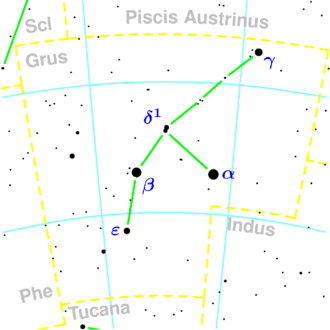NGC 7162
| Galaxy NGC 7162 |
|
|---|---|

|
|
| Photo from the Hubble Space Telescope | |
| AladinLite | |
| Constellation | crane |
|
Position equinox : J2000.0 , epoch : J2000.0 |
|
| Right ascension | 21 h 59 m 39.1 s |
| declination | -43 ° 18 ′ 21 ″ |
| Appearance | |
| Morphological type | (R ') SA (r) bc / LINER |
| Brightness (visual) | 12.6 mag |
| Brightness (B-band) | 13.3 mag |
| Angular expansion | 2.80 × 1.0 |
| Position angle | 10 ° |
| Surface brightness | 13.6 mag / arcmin² |
| Physical data | |
| Affiliation | NGC 7166-Group SSRS Group-38 LGG 449 |
| Redshift | 0.007720 ± 0.000020 |
| Radial velocity | (2314 ± 6) km / s |
|
Stroke distance v rad / H 0 |
(103 ± 7) · 10 6 ly (31.6 ± 2.2) Mpc |
| history | |
| discovery | John Herschel |
| Discovery date | September 5, 1834 |
| Catalog names | |
| NGC 7162 • PGC 67795 • ESO 288-026 • MCG -07-45-003 • IRAS F21565-4332 • 2MASX J21593905-4318224 • SGC 215633-4332.7 • HIPASS J2159-43 • LDCE 1494 NED002 | |
NGC 7162 is a spiral galaxy with an active nucleus of the Hubble-type Sc in the constellation Crane in the southern sky . It is estimated to be 103 million light years from the Milky Way and about 85,000 light years in diameter. Together with PGC 67818 it forms a gravitationally bound galaxy pair.
Together with NGC 7166 , PGC 67782 and PGC 67818, it forms the NGC 7162 group or LGG 449 .
The object was discovered on September 5, 1834 by John Herschel .
NGC 7162 group ( LGG 449 )
| Galaxy | Alternative name | Distance / million Lj |
|---|---|---|
| NGC 7162 | PGC 67795 | 103 |
| NGC 7166 | PGC 67817 | 110 |
| NGC 67782 | ESO 288-025 | 111 |
| PGC 67818 | NGC 7162A | 101 |
